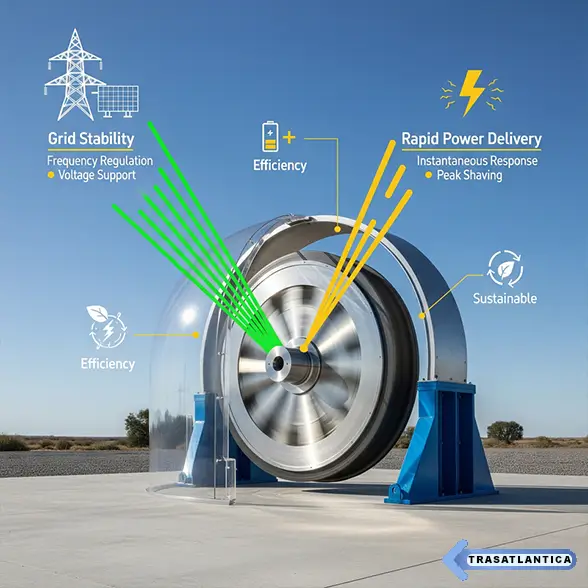Flywheel Storage offers a dynamic solution for energy storage, transforming kinetic energy into electrical power with remarkable efficiency. This technology stands out for its rapid response time and durability, making it ideal for stabilizing power grids and supporting renewable energy integration. Its mechanical nature eliminates the need for harmful chemicals, contributing to a cleaner energy landscape. As energy demands evolve, understanding the benefits of this system becomes increasingly important for modern infrastructure planning.
Flywheel Storage Advantages in Grid Stability
One of the key strengths of this technology lies in its ability to provide instantaneous power output. Unlike traditional batteries, it can handle frequent charge and discharge cycles without significant degradation. This feature proves vital for frequency regulation and voltage support in power systems. Additionally, flywheel systems require minimal maintenance, reducing operational costs over time. Their compact design allows for flexible installation in urban and remote areas, broadening deployment options. The absence of toxic materials also enhances safety and environmental friendliness, which increasingly influence energy sector decisions.
Exploring Innovations Enhancing Flywheel Storage Benefits
Recent advancements have improved energy density and system reliability. Engineers focus on materials such as carbon fiber for rotors, enabling higher rotational speeds and extended service life. Coupled with magnetic bearings, these improvements reduce friction losses and noise, boosting overall performance. Furthermore, integration with smart grid technologies allows precise control over energy flow, optimizing resource utilization. Companies now develop modular flywheel units that can scale according to demand, facilitating applications from small facilities to large utility grids. These innovations underscore the growing role of this technology in modern energy management.
Flywheel Storage Applications Driving Sustainable Energy
The versatility of this system supports various sectors including transportation, industrial processes, and renewable energy farms. In electric vehicle infrastructure, flywheels assist with regenerative braking and energy recapture, improving efficiency. Industrial plants utilize them to smooth power fluctuations, ensuring uninterrupted operations. Additionally, renewable energy installations benefit from flywheels by compensating for intermittent generation patterns. This capability enhances grid reliability and reduces reliance on fossil fuel backup systems. As a result, the technology contributes to broader sustainability goals and fosters energy independence.
Market Trends Shaping Flywheel Storage Adoption
Economic and policy factors increasingly favor the deployment of kinetic energy storage solutions. Declining costs and improved performance metrics attract investments from both private and public sectors. Governments implement incentives aimed at accelerating adoption, especially within smart city initiatives and clean energy programs. Meanwhile, strategic partnerships between technology providers and utilities promote pilot projects that validate real-world benefits. This momentum signals a shift towards diversified storage portfolios that integrate kinetic, chemical, and thermal methods. Consequently, the future energy landscape may rely heavily on such hybrid systems for resilience and efficiency.
In conclusion, flywheel energy storage benefits highlight its critical role in advancing modern power systems. Its mechanical robustness, rapid responsiveness, and eco-friendly nature position it as a valuable asset. Ongoing innovation and supportive market conditions promise continued growth and expanded applications in the global energy transition.
